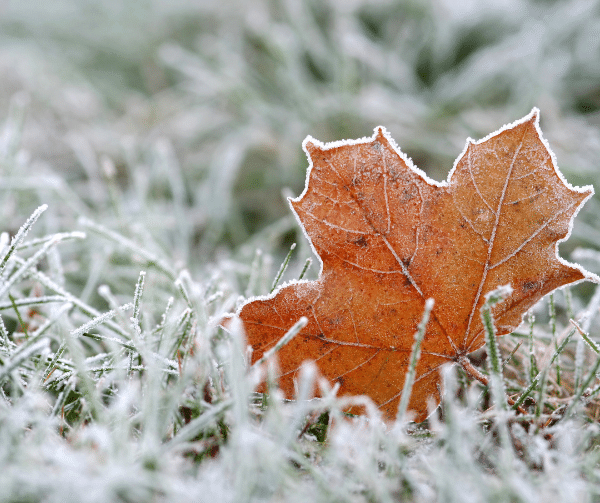
Kansas City has a way of keeping us on our toes – warm hoodie weather one day, a hard frost the next. And while we may laugh about it, your yard feels every shift.
Frost, freeze cycles, dry spells, early snow… they all play a big role in how your lawn and trees survive the months ahead.
So before winter settles in for real, here’s how to protect what’s growing right outside your door.
1. Frost Isn’t the Finish Line - It’s the Start of “Rest Mode”
When that first silvery frost shows up on your lawn, your grass begins to slow down above the surface – but below the surface, the roots are still working hard.
This transition period is when turf builds winter resistance and stores energy for spring.
Your job right now:
- Avoid walking on frosty grass (frozen blades can crack).
- Keep leaves cleared to prevent trapped moisture and fungus.
- Water on warmer days if the soil is dry — frost doesn’t mean roots stop drinking.
- Healthy roots now = a stronger, greener comeback next spring.
2. Freeze–Thaw Cycles: Sneaky Stress on Your Lawn
KC’s temperature swings can be dramatic, causing soil to expand and contract repeatedly. That movement can:
- Heave small roots upward
- Stress young or newly planted trees
- Create dry pockets where moisture can’t reach
How to help:
- Give your lawn a final deep soak before the ground freezes.
- Mulch around trees (but not against the trunk) to insulate roots.
- Maintain good soil health heading into winter — it handles stress far better than compacted, dry soil.
- A well-hydrated lawn and well-protected tree root zone can handle these swings without losing valuable root mass.
3. Protecting Trees from Winter Damage
Winter is tough on Kansas City trees – especially young, ornamental, or drought-stressed species.
Here’s how to set them up for success:
Check for weak limbs
Cracks, crossing branches, overextended limbs — these become real hazards once ice + wind arrive.
Deep water before freeze
Tree roots store moisture for months when they can’t absorb water from frozen soil.
Apply root stimulation treatments
Fall root health programs help trees build reserves and recover faster in spring.
Wrap young trunks if needed
Sunscald (yes, even in winter) can damage thin-barked trees like maples and newly planted ornamentals.
A proactive fall check can prevent mid-winter breakage, split bark, and die-off.
4. Winterizing Your Lawn the Right Way
Your lawn may be headed into dormancy, but that doesn’t mean it stops needing care.
Here’s your winter prep checklist:
- Final mowing: Keep it shorter — but not scalped — to reduce mold and matting under snow.
- Remove debris: Leaves, branches, and thatch create wet pockets where fungus thrives.
- Watch drainage: Snowmelt + frozen soil can create pooling that damages turf.
- Avoid heavy traffic: Repeated steps on frozen turf can cause long-term damage.
When your lawn enters winter clean, hydrated, and well-fed, it wakes up faster and fuller in spring.
5. Why November Prep Matters More Than You Think
Think of late fall as your yard’s last big deep breath before hibernation.
A little attention now can prevent:
- Winter kill
- Salt damage from roads and sidewalks
- Crown freeze injury
- Spring fungal outbreaks
- Early pest emergence
In other words:
Winter prep saves you money, headaches, and bare patches later.
Let Martz Bros Help You Winter-Proof Your Yard
From root care to tree inspection to final fall lawn treatments, our team has been preparing Kansas City landscapes for winter for more than three decades.
We know the patterns.
We know the soil.
And we know exactly how to get your yard through the cold months looking strong.
Call us today at (913) 789-9333 or request an estimate.
Healthy prep today → a beautiful spring tomorrow.











